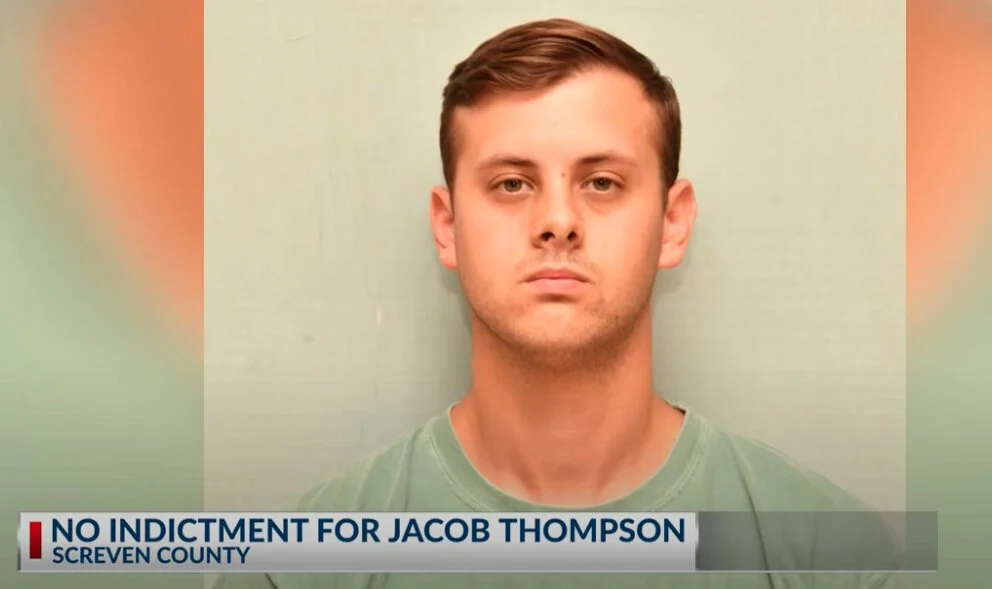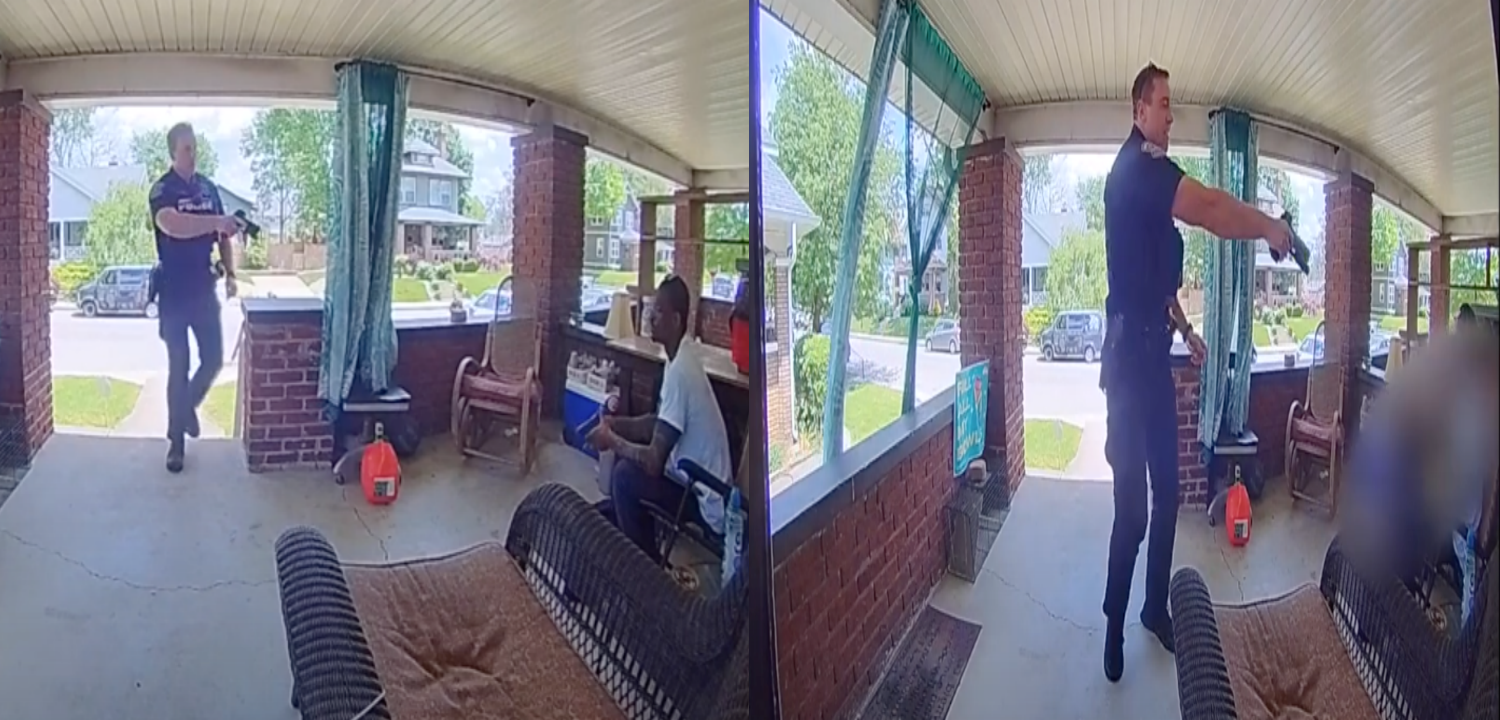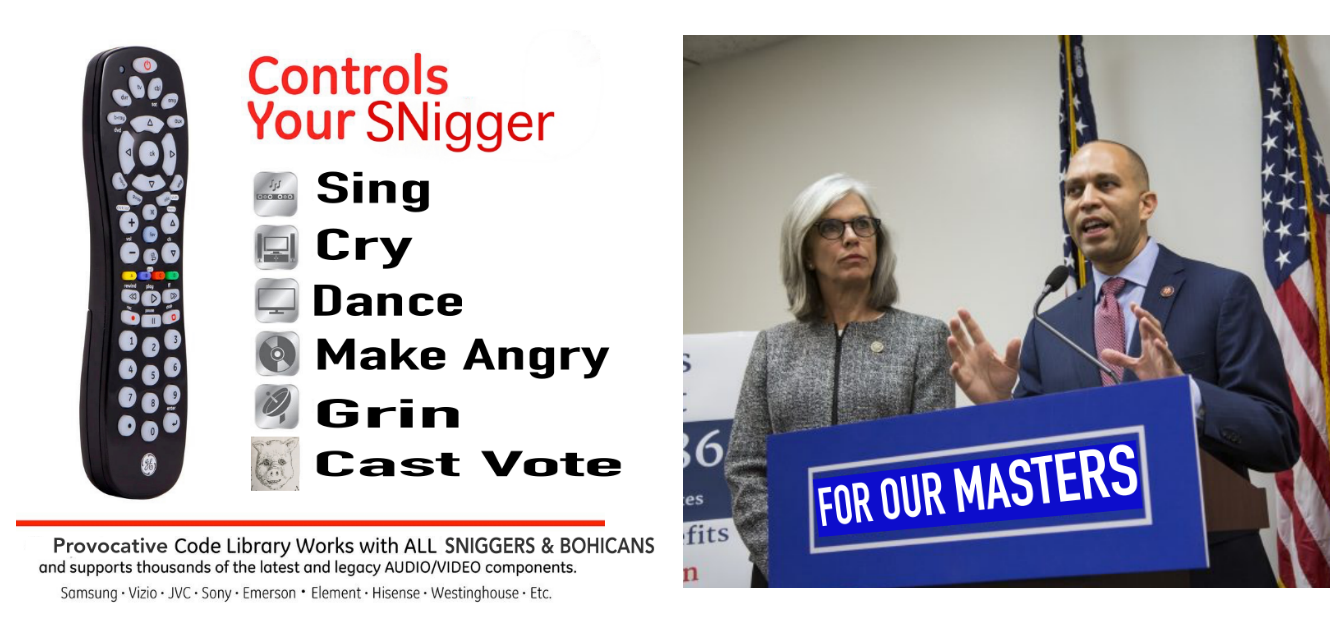From [HERE] Julian Lewis didn’t pull over for the Georgia State Patrol cruiser flashing its blue lights behind him on a rural highway. He still didn’t stop after pointing a hand out the window and turning onto a darkened dirt road as the trooper sounded his siren.
Five minutes into a pursuit that began over a broken taillight, the 60-year-old Black man was dead — shot in the forehead by the white trooper who fired a single bullet mere seconds after forcing Lewis to crash into a ditch. Trooper Jake Thompson insisted he pulled the trigger as Lewis revved the engine of his Nissan Sentra and jerked his steering wheel as if trying to mow him down.
“I had to shoot this man,” Thompson can be heard telling a supervisor on video recorded by his dash-mounted camera at the shooting scene in rural Screven County, midway between Savannah and Augusta. “And I’m just scared.”
But new investigative details obtained by The Associated Press and the never-before-released dashcam video of the August 2020 shooting have raised fresh questions about how the trooper avoided prosecution with nothing more than a signed promise never to work in law enforcement again. Use-of-force experts who reviewed the footage for AP said the shooting appeared to be unjustified.An investigative file obtained by AP offers the most detailed account yet of the case, including documents that spell out why the Georgia Bureau of Investigation concluded the 27-year-old trooper’s version of events did not match the evidence. For instance, an inspection of Lewis’ car indicated the crash had disconnected the vehicle’s battery and rendered it immobile.
Footage of the pursuit has never been made public. It was first obtained by the authors of a new book about race and economic inequality titled “Fifteen Cents on the Dollar: How Americans Made the Black-White Wealth Gap.” Louise Story and Ebony Reed shared the video with AP, which verified its authenticity and obtained additional documents under Georgia’s open-records law.
The footage does not include visuals of the actual shooting, which happened outside the camera’s view. But it shows the crucial final moments in which Thompson uses a police maneuver to send Lewis’ car spinning into a ditch. Then the trooper’s cruiser stops parallel to Lewis’ vehicle and Thompson’s voice barks, “Hey, get your hands up!” The gunshot rings out before he can finish the warning.
The documents show Thompson fired just 1.6 seconds after his cruiser stopped.
“This guy just came out shooting” and did not give Lewis “remotely sufficient time to respond” to his order, said Andrew Scott, a former Boca Raton, Florida, police chief who wrote a dissertation about police chases.
“This goes beyond a stupid mistake,” added Charles “Joe” Key, a former Baltimore police lieutenant and use-of-force expert who has consulted on thousands of such cases.
Key also took issue with the maneuver to disable Lewis’ vehicle, saying that, too, was unwarranted. And he deemed Thompson’s claim that he fired because of the revving engine “total garbage.”
“I’m not in favor of people running from the police,” Key said. “But it doesn’t put him in the category of people deserving to be shot by the police.”
Thompson was fired and arrested on a murder charge a week after the Aug. 7, 2020, shooting, which came amid a summer of protests in the wake of the police killings of George Floyd and other Black people. The trooper was denied bail and spent more than 100 days in jail.
But in the end, Thompson walked free without a trial. A state grand jury in 2021 declined to bring an indictment. The district attorney overseeing the case closed it last fall, when federal prosecutors also ruled out civil rights charges.
At the same time, the U.S. Justice Department quietly entered into a non-prosecution agreement with Thompson forbidding him from ever working in law enforcement again – a highly unusual deal that brought little solace to Lewis’ family.
“It’s inadequate,” said Lewis’ son, Brook Bacon. “I thought the shortcomings that occurred at the state level would be more thoroughly examined at the federal level, but that’s apparently not the case.”
The state of Georgia in 2022 paid Lewis’ family a $4.8 million settlement to avoid a lawsuit.
The U.S. Attorney’s Office for Georgia’s Southern District, which reached the non-prosecution deal with Thompson, declined to discuss it except to say the Justice Department communicated with the Lewis family “consistent with the law and DOJ policy.”
District Attorney Daphne Totten did not respond to requests for comment. Neither Thompson nor his attorney, Keith Barber, would discuss the case.
Because Georgia law doesn’t require troopers to use body cameras, the dashcam footage is the only video of the shooting.
“It’s a heartbreaking case and sheds light on the complexities and difficulties Black families face when intersecting with the justice system,” said Reed, a former AP journalist and one of the authors who first obtained the footage.
Lewis worked odd jobs as a carpenter and handyman. He helped put a new roof and siding on a local church, relatives said, and repaired plumbing and electrical wiring in people’s homes. He would often charge friends and family only for materials.
Days after the shooting, Thompson told GBI investigators he used the tactical maneuver to end the chase – which he estimated reached top speeds of 65 mph (105 kph) — out of concern that the pursuit was approaching a more populated area. He acted right after Lewis’ car rolled without stopping through an intersection with a stop sign.
Thompson said that after getting out of his cruiser beside Lewis’ car in the ditch, he heard the Nissan’s engine “revving up at a high rate of speed.”
“It appeared to me that the violator was trying to use his vehicle to injure me,” Thompson said in an audio recording of the GBI interview obtained by the AP. He said he fired “in fear for my life and safety.”
On the dashcam footage, a brief noise resembling a revving engine can be heard just before Thompson shouts his warning and fires. Less than two minutes later, the trooper can be heard saying: “Jesus Christ! He almost ran over me.”
According to the GBI case file, Thompson fired facing the open driver’s side window of Lewis’ car less than 10 feet (3 meters) away.
Agents at the scene found Lewis’ front tires pointing away from the trooper’s cruiser. They also determined Lewis’ car had no power after the Nissan struck the ditch. Raising the hood, they discovered the battery had tipped onto its side after its mounting broke. One of the battery cables had been pulled loose, and the engine’s air filter housing had come partially open.
Investigators later performed a field test on Lewis’ car in which they connected the battery and started the engine. When an agent disconnected one of the cables from the battery, the car’s engine immediately stopped. Likewise, opening the air filter cover caused the engine to die.
Because grand jury proceedings are generally secret, it’s unknown why the panel declined to indict Thompson in June 2021. Georgia affords law enforcement officers the chance to defend themselves before a grand jury, a privilege not given to any other defendants.
Totten, the district attorney, decided not to try again, saying in a Sept. 28 letter to the GBI that “there has been no new evidence developed in this case.”
For Bacon, Lewis’ son, the lack of charges is an open wound. He worries no one will remember what happened given the passage of almost four years — and the number of others killed by police under questionable circumstances.
“It’s hard for anybody to even reach back that far, especially if they didn’t hear about it initially,” he said. “But these issues haven’t gone away.”


















































































































































































































































































